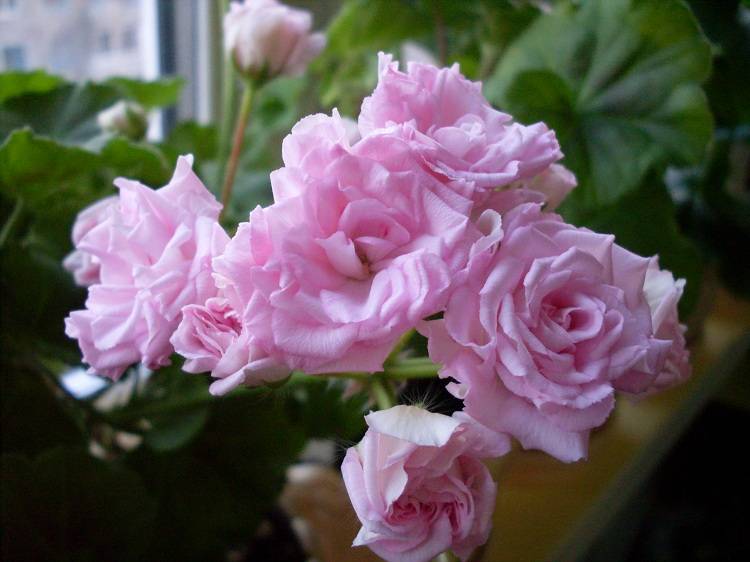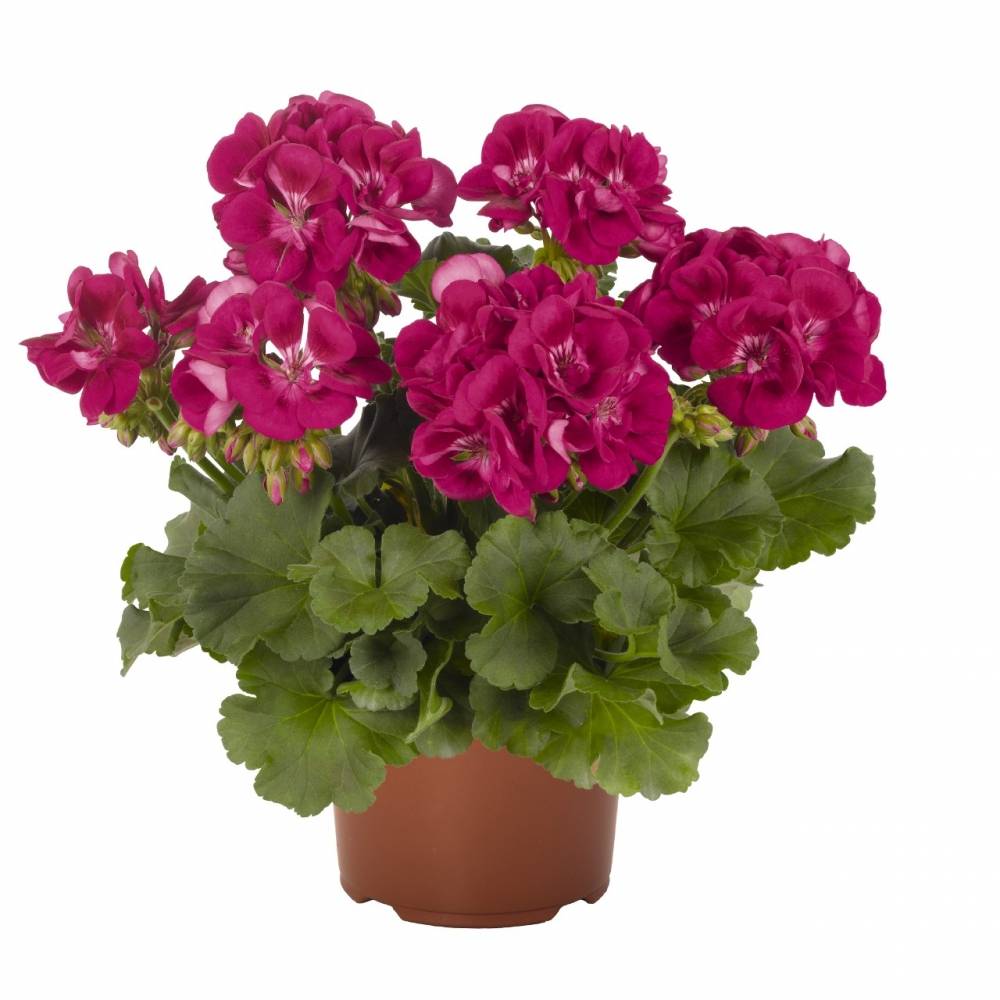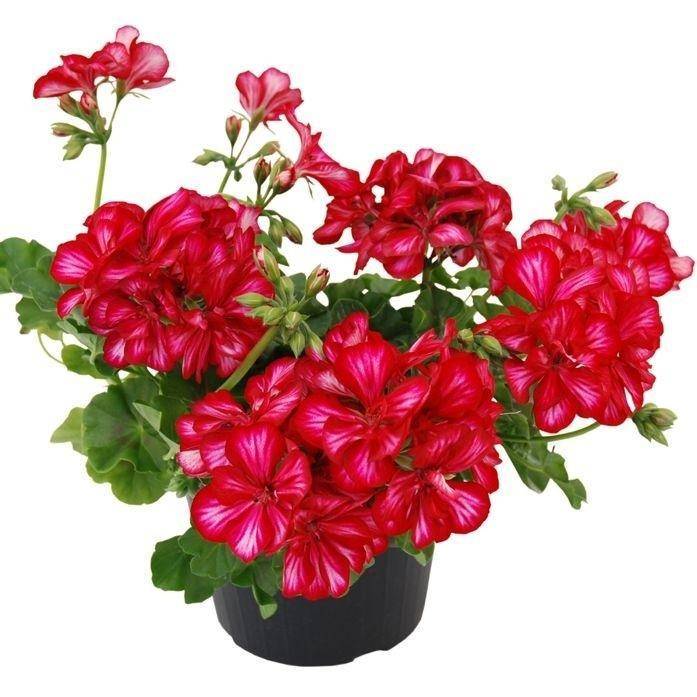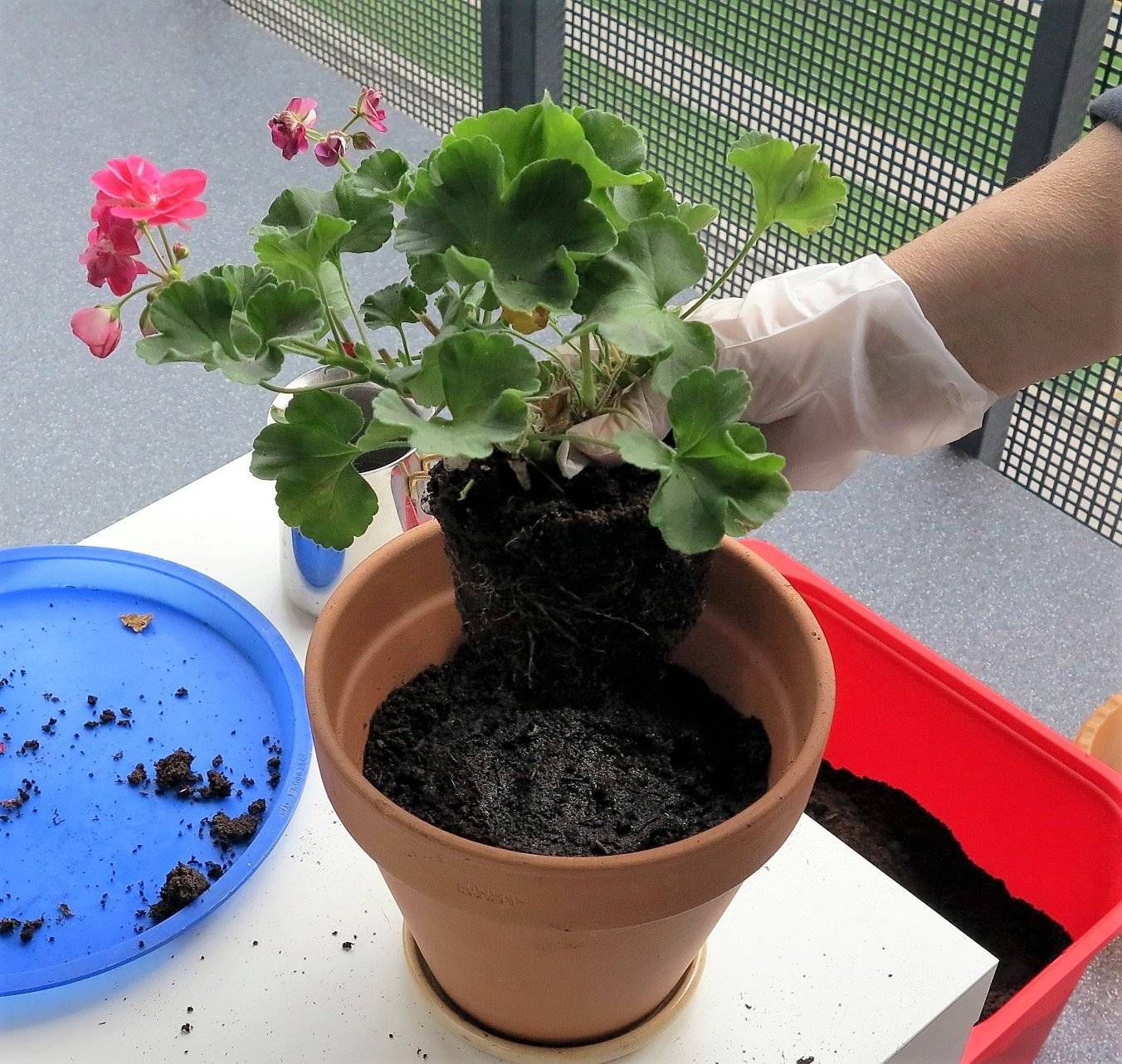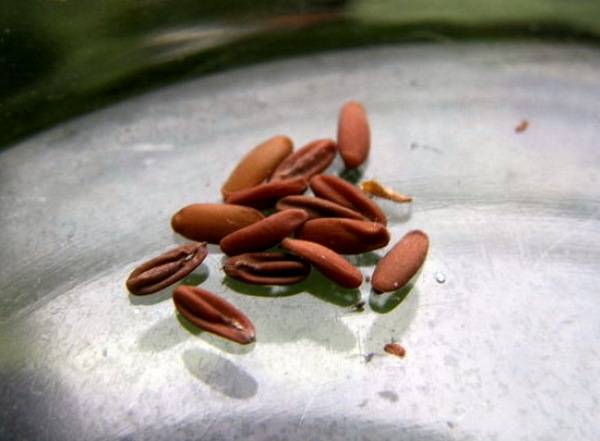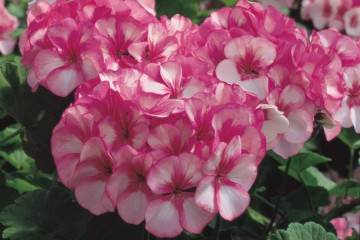Pelargonium Rococo
Content:
Pelargonium Rococo is a variety that, despite all the variety of varieties, stands out for its unusual appearance. It will decorate any windowsill. Its flowers are strikingly similar to those of a rose. However, caring for a plant is much easier than for a whimsical queen of flowers.
Pelargonium Rococo - what is this decorative hybrid variety
This hybrid variety of pelargonium belongs to the Geranium family. This family includes 11 genera and 800 species, each of which includes a huge number of varieties, including hybrid ones.
Brief description and history of origin
Description of Pelargonium Rococo:
- growth form - bush;
- internodes are short, shoots are not elongated, rather compact;
- leaves are light green, rounded with wavy edges;
- the main feature is gorgeous flowers resembling small roses, collected in large inflorescences. Their color is light pink.
Geranium Rococo is a hybrid bred in 1981 in the United States. It turned out thanks to the crossing of ivy and zonal pelargonium. Rococo owes its vertical growth to the ivy variety, and the leaves are borrowed from the zonal varieties.
Both parental varieties are distinguished by a variety of colors. Their flowers can be white, red, purple, and the daughter variety has a stable pale pink shade of petals.
Growing Pelargonium Rococo at home
Rococo is a geranium that is not picky in nature, it has enough basic living conditions. However, in order to achieve lush, long-lasting flowering, these conditions must be observed, otherwise the decorative characteristics will noticeably decrease.
Illumination and temperature conditions
This hybrid loves well-lit windowsills. With a lack of light, the flowers and leaves become smaller, the inflorescences will become thinned out. Year-round daylight hours of a flower should be at least 5 hours. The more, the better. In winter, when natural light becomes scarce, additional lighting will be required.
A moderate temperature regime is suitable for pelargonium of this variety. During the growing season, the daytime temperature should be 20-25 ° C, the nighttime temperature 12-15 ° C. Therefore, in the summertime, the flower can be taken out into the garden or even transplanted into the open ground, where it will feel as comfortable as possible.
In winter, the temperature should be the same as the standard nighttime. It needs to be maintained around the clock. Such a period is necessary for the plant to rest and gain strength before the new flowering season.
Watering rules and humidity
Watering should be moderate and done only as needed. The soil should not be overdried, but it should not be overfilled either. It is best to target the topsoil. If it is dry, it is worth pouring in the next portion of water.In winter, the procedure is reduced to 1 time in 2 weeks.
Rococo does not need spraying of pelargonium, on the contrary, the procedure can adversely affect the condition of leaves and flowers - brownish spots may remain on them. And spraying at low temperatures can cause stem rot.
Top dressing and soil quality
Top dressing is necessary for geraniums throughout the growing season. It is best to choose mineral complex fertilizers for it. Moreover, in the spring, before the buds appear, it is worth focusing on nitrogenous compounds so that the bush will increase the green mass and become more fluffy. From the beginning of the bud setting and throughout the entire flowering period, potash-phosphorus mixtures should be a priority.
The soil for the plant should be nutritious and loose. A ready-made substrate for geraniums or pelargoniums is well suited. But you can make up the soil mixture yourself. It should turn off:
- 2 pieces of turf;
- 1 part of coarse river sand;
- 1 part peat.
Pelargonium prefers neutral acidity. This is definitely worth taking care of.
Flower container size
Choosing the right pelargonium pot is an important part of a lush bloom. In no case should it be wide and deep. For proper flower cultivation, the flowerpot should be slightly cramped. Otherwise, the root system will first begin to actively develop, and the aerial part will stop growing. You can choose any material, in this case the size is of primary importance.
Pruning and replanting
A transplant is required quite often, since Rococo is growing at a fairly rapid pace. Young flowers need to be replanted annually in spring, adult bushes less often, as the root system grows. The signal that a transplant is required will be the roots peeking out of the drainage holes and appearing on the surface of the substrate.
Formative pruning is also most often done in the spring. It is necessary so that the stems of pelargonium do not stretch, and the plant looks like a lush neat bush. It is worth pinching young lateral stems as soon as 3-4 leaves appear on them. This will give strength to the development of new shoots.
It is imperative to remove the stalks immediately after flowering. If this is not done, geranium will waste energy on the formation of fruits and seeds.
Features of flowering plants
Pelargonium Rococo blooms are lush, gentle and very long lasting with proper care.
A period of activity and rest
The period of activity begins immediately with the arrival of spring, as soon as daylight hours increase. At this time, it is time to return to more frequent watering and feeding. Flowering begins in mid-spring and can last up to 9 months. To do this, you need to take care of the flower, cut off wilted inflorescences and create the most comfortable conditions for it.
Flowering can be extended by making it year-round, but in this case, the power of pelargonium will quickly dry up, flowering will stop for a long time. Therefore, a dormant period is required - three winter months. At this time, the flower is resting and gaining strength, it is important to observe the temperature and light conditions.
Types and shape of flowers
The flowers are one-colored, rounded, reminiscent of rose inflorescences with a simple perianth. They are relatively large, collected in complex umbrellas.
Seed flower propagation procedure
This hybrid reproduces well with seeds, but they must be purchased from the store and not harvested by yourself. When harvested at home, young plants will not retain the necessary properties.
Instructions for germinating Rococo geraniums from seeds:
- Wipe each seed before planting with sandpaper for better germination.
- Plant the planting material in shallow containers filled with moist soil. The distance between the rows should be about 3 cm. Sprinkle on top with a thin layer of substrate.
- Place the container in a room at room temperature and humidify periodically.
- As soon as the first shoots appear, place the container on the windowsill so that the plants have enough light. In this case, the temperature can be lowered slightly so that the root system develops better.
- When the first 3 leaves appear, a pick is made into new pots. In this case, the root collar should not deepen too much.
Growing problems, diseases and pests
The main problems in growing are the lack of flowering and yellowing of the leaves. This is the result of improper care. In the first case, the reasons are lack of light, lack of nutrients, inappropriate soil, too spacious a pot. Yellow and dry leaves appear due to non-compliance with the watering regime.
Of the pests, the flower can be attacked by:
- spider mite;
- thrips;
- aphid;
- mealybug.
The plant has a fairly high immunity to diseases, but root or stem rot may occur. It is also the result of over-watering.
To solve problems, you need to identify their cause. As soon as it is found, it is worth following all the rules of care, and the flower will come to life again. To fight insects, you will need special products sold in flower shops. The damaged parts of the plant must be removed. If rot attacked, you will need a transplant with preliminary drying of the earthen coma and the removal of all rotten roots and leaves.
Pelargonium Rococo is one of those flowers that are easy to grow, and it is pleasant to enjoy the result of your labors. Pleased not only with the appearance, shape and splendor of the inflorescences, but also the duration of flowering. The easiest way is to purchase a ready-made plant, it is inexpensive, but it is even cheaper to buy seeds and grow a bush yourself.
